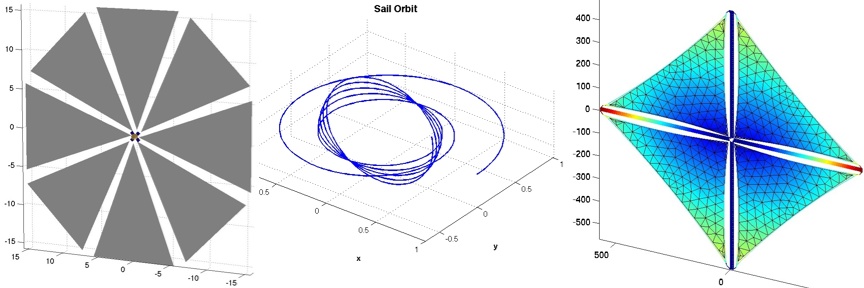
|
SUPPORT SITE |
|

PSS has been developing sail analysis software since 2004 for both NASA's In-Space Propulsion program and the SBIR program. Our high-fidelity disturbance model enables users to simulate complex sail shapes without resorting to analytical approximations. You can study the nonlinear effects of different sail material properties and propellantless actuation schemes. The combination of these special sail CAD and dynamics models with control design tools from the core toolbox provide a complete sail attitude and orbit control analysis solution!
The Solar Sail Module has examples of several common sail configurations, including square, circular, and bladed designs. There is a function producing a striped quadrant and capability for modeling billow as a function of planar location. The disturbance model uses the geometry of the sail mesh to compute each force and torque so your model can be as simple or complex as you like.
Sail control mechanisms such as sliding masses and a gimballed boom can be modeled in detail. A boom can be modeled with two-body dynamics and gimbal rotation constraints. Vanes can easily be handled as additional membranes.
McInnes’ locally optimal control laws are modeled for geocentric and heliocentric orbits. Orbits can be propagated using a single or multi-body gravity model. An example of a patched trajectory from the two locally optimal laws for semi-major axis and inclination is given representing the Solar Polar Imager mission. Another interesting trajectory and control example is following an invariant manifold to a displaced planetary orbit.
Additional Solar Sail Module images are located at the end of the SCT Gallery, here.